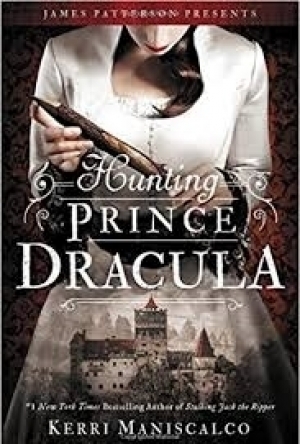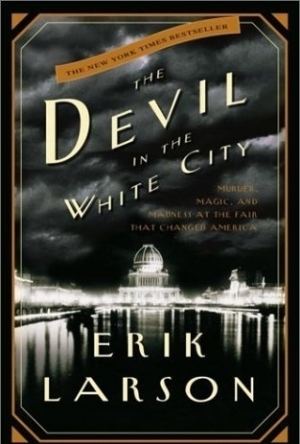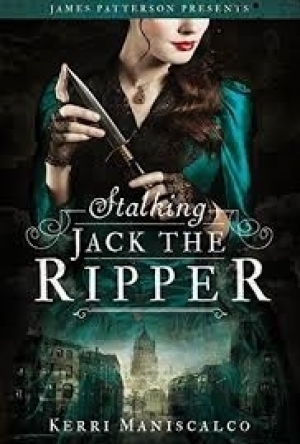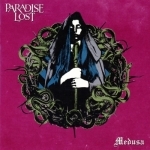
Medusa by Paradise Lost
Album Watch
Most people will know Medusa as the Gorgon from Greek mythology; she is the infamous beast with...
metal
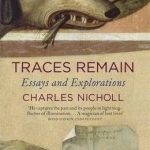
Traces Remain: Essays and Explorations
Book
History leaves traces of the people - Byron, Shakespeare, Rimbaud, Leonardo - living through it, in...
Kyera (8 KP) rated Hunting Prince Dracula in Books
Feb 1, 2018
I found the plot of Hunting Prince Dracula to be more enjoyable than its predecessor, Stalking Jack the Ripper. There was a new cast of supporting characters which brought a depth to the storyline that wasn't as prevalent previously. There were more characters that had been introduced and developed that you formed bonds with or questioned their intentions - could they be the killer or the next victim?
By far my favourite aspect of the series was the Holmes/Watson-esque relationship between Thomas and Audrey Rose. Thomas' quips and barbs were the most enjoyable parts of the book, despite his sometimes rakish manner. He was my favourite character in both the first and second book. It was nice to see his emotional development over the course of the novel as he had previously been hiding that aspect of himself.
Audrey Rose continues to monologue incessantly in her head, both chastizing herself profusely for her feelings and reliving the events of Stalking Jack the Ripper. It is clear that she is suffering from a traumatic event, but is unable to determine how to deal with it. It was interesting to see her attempting to cope, yet sometimes falling prey to fits of her imagination as she was unable to process the events completely. Stalking pushed Audrey Rose in ways that she was not equipped to deal with and her struggle throughout the book feels authentic.
I felt that the mystery was very well done and the culprit wasn't obvious from the first few pages, rather you questioned everything up until the very end. Our heroes conclude the story with the news that they will be traveling once more and Escaping from Houdini in the third book in this series.
Lyndsey Gollogly (2893 KP) rated Breathless ( Scarlet Suffragette book 2) in Books
Mar 29, 2022
Kindle
Breathless (Scarlet Suffragette book 2)
By Nicola Claire
⭐️⭐️⭐️⭐️
Nicola Claire's captivating new Gothic romance series continues with a dark and sinister London City at the end of the nineteenth century - brightened by a fearless and talented heroine and a loyal and secretive police inspector...
Determined doctor? Interfering busybody? Fearless fighter?
The London of Anna Cassidy's memories is not the London she faces today. Having proved her worth as a physician, Dr Cassidy finds herself pitted against the stolid attitude of a male-dominated society.
But it's not only society she has to contend with.
A criminal mastermind has set themselves up in London, England; chosen the dirty streets of Whitechapel and Lambeth as their stage. Competing against a devious and cunning opponent sets Anna and her closest friends off on a dire adventure, which could culminate in a loss so great Anna may never recover again.
Steadfast police inspector? Loyal guardian? Caring lover?
Anna, however, is not alone. Or, at least, she won't be once Inspector Kelly finds her. Facing the ghosts of his past, Andrew Kelly rushes to face Anna's enemies and protect the woman he loves.
But Anna is not unable to defend herself.
Proving she needs him is a task Inspector Kelly would gladly undertake. But the city of Andrew's birth is more in the grip of evil machinations than it has ever been, bringing to mind memories of a dark London, ripped to within an inch of its life by a devil known to most simply as Jack.
Andrew knows otherwise. For his secrets are unravelling and within their shadowed corners lies a murderer, a poisoner, and a villain so deceitful that nothing is what it appears to be.
A gritty, twisted, and authentic Victorian romantic suspense, sure to rip you apart... just like old Jack.
Read preview >
This was so good I love the era and the references to Jack the Ripper and Sherlock Holmes. It has fabulous characters both good and bad. The story kept you wanting to read more. I’m not one for huge relationship storylines but this I loved. Highly recommended if you like murder mystery set in a gothic Victorian era.
The Routledge Handbook of International Beat Literature
Book
There was a time when "the Beats" seemed a familiar, even fixed, pantheon: Kerouac, Ginsberg,...
Hadley (567 KP) rated The Devil in the White City: Murder, Magic, and Madness in Books
Jan 18, 2021
He's been a doctor and a licensed pharmacist, who then conned an old couple into selling their drug store to him where he preyed on young girls and ignorant customers that would buy whatever Holmes would tell them to buy, whether it were real or fake tonics.
He was a building owner who had a murder hotel secretly built with " a wooden chute that would descend from a secret location on the second floor all the way to the basement... ", "a room next to his office fitted with a large walk-in vault, with airtight seams and asbestos-coated iron walls. A gas jet embedded in one wall would be controlled from his closet...", "a large basement with hidden chambers and a sub-basement for the permanent storage of sensitive material. "
He owned and ran an alcohol-treatment company known as the Silver Ash Institute that claimed to have the cure for alcoholism.
He was a traveling business man, who had two wives and two children. He established the Campbell-Yates Manufacturing Company, which made nothing and sold nothing.
He was also labeled as America's first serial killer. His body count is unknown even today; his victims were frequently young women, which included stenographers and house wives. He was best known for convincing people who trusted him to sign him as the beneficiary of their life insurance policies, only to kill them and make it seem an accident so he could collect the money.
Holmes grew up in a small farming village in New Hampshire, where he briefly spoke about an early fear of a human skeleton that hung in a doctor's office: " 'I had daily to pass the office of one village doctor, the door of which was seldom if ever barred,' he wrote in a later memoir. 'Partly from its being associated in my mind as the source of all the nauseous mixtures that had been my childish terror (for this was before the day of children's medicines), and partly because of vague rumors I had heard regarding its contents, this place was one of peculiar abhorrence to me.' "... "Two children discovered Mudgett's [Holmes' real last name] fear and one day captured him and dragged him 'struggling and shrieking' into the doctor's office. 'Nor did they desist,' Mudgett wrote, 'until I had been brought face to face with one of its grinning skeletons, which, with arms outstretched, seemed ready in its turn to seize me. It was a wicked and dangerous thing to do to a child of tender years and health,' he wrote, ' but it proved an heroic method of treatment, destined ultimately to cure me of my fears, and to inculcate in me, first, a strong feeling of curiosity, and, later, a desire to learn, which resulted years afterwards in my adopting medicine as a profession.' "
Erik Larson's fourth book, the Devil in the White City, is only partly about Holmes and his dark trail of murder and lies. The story told is mostly centered around the planning and building of the 1893 World's Fair. The prologue opens with one of the architects aboard a ship long after the fair has ended - - - 1912 to be exact- - - where he begins to write of the fair in his diary. The next chapter continues on with Chicago competing against other major cities to win the rights to host the World's Fair. Chicago was not the ideal place for the fair because it was known for it's crime and slaughter houses - - - this was exactly why the politicians wanted it so badly there, so it would help to lighten the image of Chicago for the rest of the world. Even the local Whitechapel Club that had sprouted up after the infamous murders by Jack the Ripper, were excited to win the rights to host the fair in their city, and celebrated in a macabre way:
"Upon learning that Chicago had won the fair, the men of the Whitechapel Club composed a telegram to Chauncey Depew, who more than any other man symbolized New York and its campaign to win the fair. Previously Depew had promised the members of the Whitechapel Club that if Chicago prevailed he would present himself at the club's next meeting, to be hacked apart by the Ripper himself - - - metaphorically, he presumed, although at the Whitechapel Club could one ever be certain? The club's coffin, for example, had once been used to transport the body of a member who had committed suicide. After claiming his body, the club hauled it to the Indiana Dunes on Lake Michigan, where members erected an immense pyre. They placed the body on top, then set it alight. Carrying torches and wearing black hooded robes, they circled the fire singing hymns to the dead between sips of whiskey. The club also had a custom of sending robed members to kidnap visiting celebrities and steal them away in a black coach with covered windows, all without saying a word.
The club's telegram reached Depew in Washington twenty minutes after the final ballot, just as Chicago's congressional delegation began celebrating at the Willard Hotel near the White House. The telegram asked, 'When may we see you at our dissecting table?' "
There are chapters in-between, technically reading like a side story, that tell us about Holmes and his misdeeds in Chicago, but there just wasn't enough about Holmes that I could consider this a True Crime book, nor an informative book about Holmes. Unfortunately, when the reader begins to really dwell into the story of Holmes, it's quickly ended by having two or more chapters about the building of the World's Fair. One interesting point about the story is that the reader does get to see how many inventions were brought to light because of the Fair, such as the invention of the Ferris Wheel. Larson's writing is very coherent and the descriptions are so well done that the reader is practically transported back to the late 1800s, yet, before I finished the book, I felt misled by the title... then coming across everything that happened to not only the Fair, but the people who were involved with it, it's hard not to wonder if the whole thing was cursed, thus the Devil being in the White City.
One of the side stories I did really enjoy was the slow unfolding of a man named Prendergast. A delusional young man who ran one of the groups of paperboys in Chicago, who was also obsessed with politics, became a determined supporter of Mayor Harrison; after Harrison was voted into office again, Prendergast believed it was because of him and the letters he sent out to numerous politicians and potential voters. Prendergast also believed he deserved a chair on the council for Harrison's re-election, for which he even showed up at City Hall to take over. This incident was the straw that broke the camel's back for Prendergast - - - he was humiliated when the people there laughed in his face. Prendergast then decided to take matters into his own hands, and bought a revolver. The day before the Fair would end, Prendergast showed up at Harrison's home and shot him. Harrison died minutes later. Prendergast turned himself in for the murder as soon as he left Harrison's residence. When asked why he had done it, Prendergast responded: " ' Because he betrayed my confidence. I supported him through his campaign and he promised to appoint me corporation counsel. He didn't live up to his word.' "
This book has been voted as a top True Crime must-read novel. I don't agree with this. As I said before: Holmes' chapters are few; eighty percent of this book is about the building of the World's Fair. As a True Crime junkie, I didn't enjoy this one, but also as a history junkie, I enjoyed learning about the Fair and everything that happened. I can't recommend this book to TC fans or horror fans. It's mostly history and architecture.
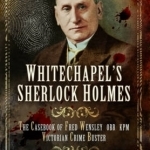
Whitechapel's Sherlock Holmes: The Casebook of Fred Wensley OBE, KPM - Victorian Crime Buster
Book
The story of Fred Wensley, a Somerset gardener who joined the Metropolitan Police in 1888 and...
Conversations with Edmund White
Will Brantley and Nancy McGuire Roche
Book
Conversations with Edmund White brings together twenty-one interviews with an author known for...
Kyera (8 KP) rated Stalking Jack the Ripper in Books
Feb 1, 2018
The author did a brilliant job weaving what facts we know historically about Jack the Ripper into her carefully crafted narrative. The dialogue is a bit clunky at times and the pacing could have been better, but overall I enjoyed this book. Some people felt that the perpetrator was obvious from the first moment they stepped on the scene, but I didn't feel that way. It seemed like the suspense and horror built over the course of the book until you finally realize who the killer is in the final moments before its reveal.
The characters were both a high and low point in the book. I enjoyed the fact that the main character was meant to be a more progressive person than women in her time generally, but sometimes her inner dialogues were strange moments of her thinking utterly ridiculous thoughts and then immediately dismissing them like oh no that cannot be. She desires to be both pretty and fierce and does not understand why society feels that she cannot be both. Audrey Rose also has a propensity for charging into dangerous situations with no planning, when a murderer is stalking the streets looking for women to cut apart. It's difficult to explain how all of those things combined to affect her portrayal, but overall it made her seem less strong, much more insecure, and significantly less grounded than I feel the author was hoping to portray her.
Thomas Cresswell, on the other hand, is the witty British boy that you can help but love when he enters a scene. He made brilliant deductions and didn't miss a moment attempting to seduce Miss Audrey Rose. The two of them together were such a fun team, even if Audrey Rose's inner dialogue was frustratingly superficial. Oh, I hate this boy, oh, I can't help but want to kiss him, he's terrible, he's wonderful. Please, Audrey Rose, control your emotions and be the strong heroine we deserve in this book. Together, they were very reminiscent of Sherlock Holmes and John Watson.
The author creates a vivid landscape upon which this gruesome tableau takes place. That being said, I would definitely caution some readers from this book as the violence is quite explicitly described. It can definitely be too much for some younger readers or people who are squeamish. If you feel like you're okay with the gory details and enjoy forensic science, I believe you will enjoy this book.

The 145th Open Annual: The Official Story
Book
The 145th Open Annual chronicles Henrik Stenson's thrilling victory at Royal Troon as he became the...
